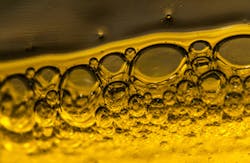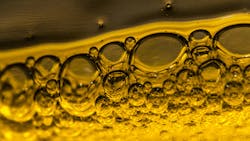Researchers at the University of Washington (UW) have developed a new technology that enables them to thicken and thin fluids at the micron level and increase the effectiveness of soap and detergents in dealing with dirt and grease.
The study, published online in the Proceedings of the National Academy of Sciences journal, has found a way to reduce costs for manufacturers and consumers, because the procedure can remove the need for adding substances to regulate the thickness of liquids. Most shampoos or dishwashing detergents contain substances known as surfactants. Their molecules are extremely small but are actually what grants soap and shampoos their cleansing properties and make them thicker. These molecules are made of two parts — a head, which is attracted to water, and a tail, which is oil-soluble. Their unique structure allows them to break into parts and penetrate oil and grease in water environment.
When manufacturers want to achieve the necessary thickness of their products, they have to add surfactants, both organic and synthetic, often accompanied by other ingredients that enable the products to remove dirt. However, these additives lead to increased production costs and are also reflected in the costs of packaging and shipping, explained Amy Shen, a UW associate professor of mechanical engineering and lead author of the research.
The team of researchers found a way to eliminate the need for adding extra substances by achieving the desired thickness on the micron level. They discovered that when they directed the flow of liquid through microscoping channels, the substance came out thicker at the other end. Shen explained that scientists either added salt or had to change the temperature and the level of acidity to achieve the effect, Nanowerk website reported.
To make fluids thicker, scientists used a tool called a microfluidics device, through which a mixture of water, detergent and salt is pumped. The mixture goes through a series of vertical posts, each one situated at a distance of one-tenth of the size of a human hair from the neighboring one. Passing through such a tiny gap causes the liquid to deform and turn into a gel-like substance, with higher thickness and elasticity. High-resolution images of the substance revealed a series of wormlike rods that form an entangled web, resembling a scaffolding. The new structure remained unchanged even after the end of the procedure, suggesting that the method created a permanent network that could prove very useful for various applications, Shen said.
Researchers also found that the opposite effect could be created by pumping thicker and more elastic fluids through the microfluidics device, making them thinner and more porous. Although this has not been thoroughly tested, Shen believes that it could be used for injecting a semi-liquid gel into a patient's vein, where the substance will thin out and help deliver a medicine throughout the body.

